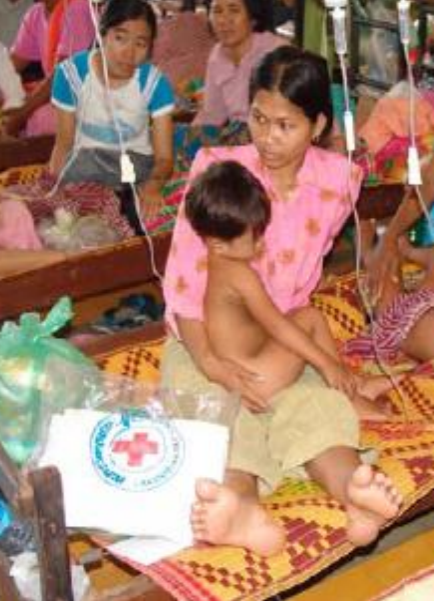
Like many countries in Southeast Asia, Cambodia suffers from its share of disasters. Many of these, such as flash flooding and droughts, occur in and around the famous “rice bowl” region of the Mekong Basin on an annual basis, ruining valuable crops as well as lives.
Disease outbreaks have also taken their toll on the predominantly rural population. Last year, the International Federation released emergency fundsto support Cambodian Red Cross respond to an outbreak of dengue fever, which affected up to 40,000 people, most of whom were children.
Learning from these experiences will be critical in ensuring that the country is prepared for future disasters, including the ever present global threat of an Avian Human Influenza pandemic.
New laws are needed
Increasingly high on the national agenda is the development of new laws on disaster management and communicable disease control, to ensure that local, national and international responses are supported by a sound legal basis and clear organisational structure.
To this end, the International Federation’s IDRL Programme and the World Health Organisation are launching a new project, funded by the Asian Development Bank, to provide technical assistance to the Government of Cambodia on Legal Preparedness for Responding to Disaster and Communicable Disease Emergencies. Key partners will be the National Committee for Disaster Management, the Ministry of Health and the Cambodian Red Cross.
“We are still facing some challenges in pandemic preparedness,” said Dr. Sok Touch, Director of the Communicable Disease Control Department in Cambodia’s Ministry of Health. “We need to find ways of ensuring that communities can report outbreaks as soon as possible. The research and development of new laws could help us find some lasting solutions.”
The project will aim to identify legal challenges likely to affect a fast and efficient response to a major disaster or disease outbreak in Cambodia. It will also review domestic law and systems in light of two key international instruments: the recently adopted IDRL Guidelines and the International Health Regulations. Research findings from the project will be presented to a national workshop, where it is expected the relevant Government agencies and other stakeholders will develop a plan of action to address any gaps in the system.
Improving national and international assistance
The Cambodian Red Cross sees great benefit in this work. As an organisation working at community level, as well as alongside national and international response agencies, it sees the challenges from many different angles. “Having good laws and systems in place will help us to get the right information to the right place at the right time after a disaster”, said Pum Chantinie, Secretary-General of Cambodian Red Cross. “But it’s not enough to plan within our own borders. We must also ensure our legal system is prepared for cross-border and international cooperation.”
Indeed, international assistance often brings its own set of legal complications. Other studies conducted by the Federation’s IDRL Programme have revealed that, in many countries, laws can inadvertently create stumbling blocksfor bringing in urgently needed goods and equipment, for example when they become stuck in ports and airports for months on end waiting for customs clearance. In the case of an influenza outbreak, such delays could put the whole region at risk.
The World Health Organisation is all too aware of these potential challenges. In 2007, together with the Association of Southeast Asian Nations (ASEAN) and the Japanese Government, the WHO took part in an exercise known as Panstop, involving the mock scenario of rapid crossborder deployment of Tamiflu and protective equipment into Cambodia to curb an outbreak of a pandemic strain of influenza.
As Dr Shigeru Omi, WHO Regional Director for the Western Pacific, noted in a press release about the exercise, “Containment of an influenza pandemic has never been attempted before, and we cannot be sure it will work.”
Fortunately, work is already underway on new laws and systems in place to support fast emergency responses. In 2007, the National Plan for Avian Influenza was officially launched, including planning for an influenza pandemic. The Cambodian Government is also in the process of drafting a new Bill on Disaster Management, and there are plans in place for new laws on Communicable Disease Control.
The Legal Preparedness project should make a significant contribution to these initiatives